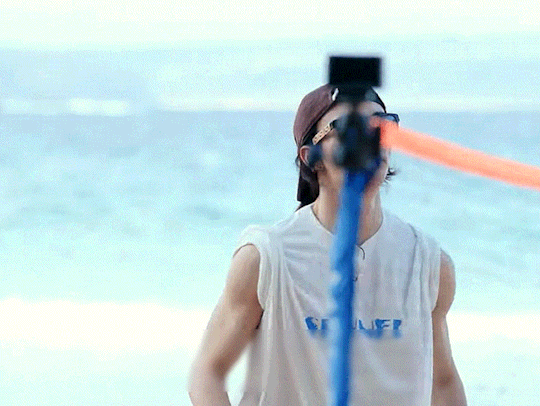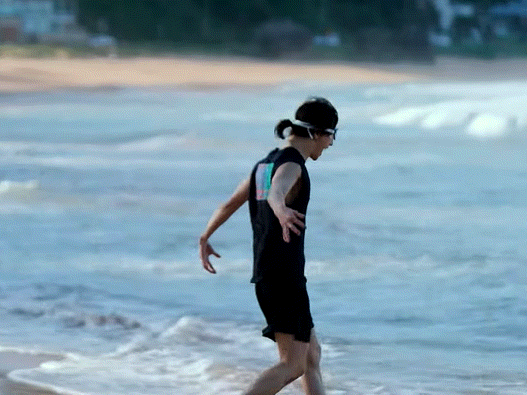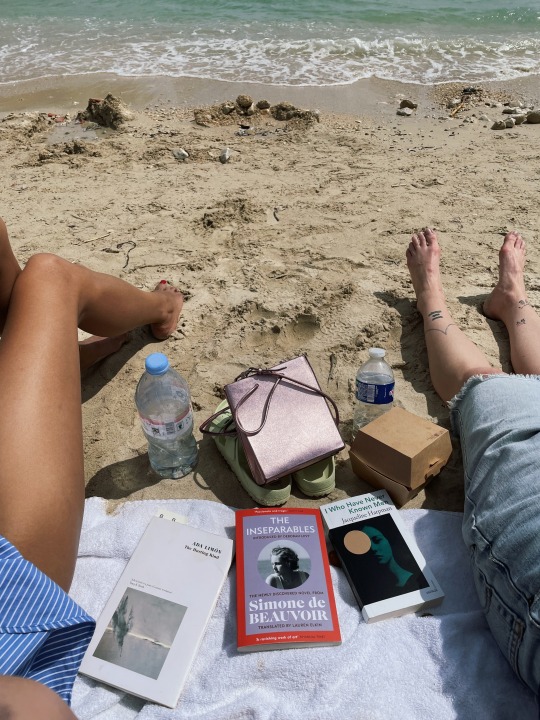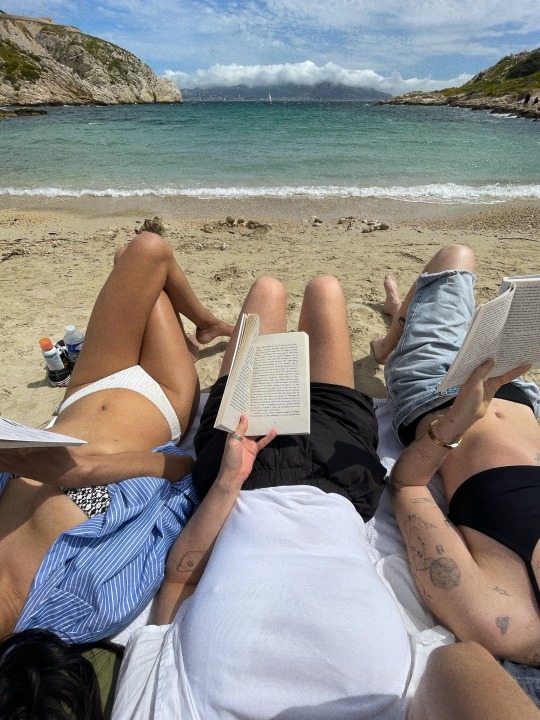#live sand
Explore tagged Tumblr posts
Text
I mostly write about organisms and not the principles of fishkeeping. However people often ask me about two related phenomena, cycling and stocking. Aquariums are safe for fish and other animals because of the nitrogen cycle. This is what determines, moreso than the water volume, the carrying capacity of the tank. But many people seem to be confused - what is the nitrogen cycle?
'Cycling' refers to the cycle by which the toxin ammonia, which is excreted as waste by organisms, before it is turned to nitrite and then to nitrate by biological actors. In aquarist parlance 'cycling' refers to the process and duration of time, during which the nitrogen cycle becomes established and stable. Properly the cycle continues throughout the operation of the aquarium.
Ammonia, which contains nitrogen, is the principal excretory product of living animals, and they void it because it is a toxic byproduct of their own metabolic processes. Human urination is an example of a way in which animals lose excess ammonia, but other kinds of animal may excrete ammonia by means of different methods.
Fortunately other organisms can find a positive use for ammonia, which animals don't want. Their own metabolisms create nitrite from the ammonia they intake, by breaking it down and adding oxygen to the nitrogen. Then yet more microscopic organisms convert the nitrite to the similarly named and chemically related nitrate, which must also be maintained at low levels, but is far less harmful. Traces of nitrate are in fact beneficial to some aquarium organisms.
The nitrogen cycle originates from the decomposition of amino acid, and this is why test kits are available to test for dissolved organics, which are not themselves inherently harmful, but their buildup indicates strain upon the system. How much strain is acceptable depends on the kinds of animals that are living in the aquarium. There isn't really a single standard as to when there are too many dissolved organics, or even nitrate. But regular and sensibly proportionate water changes, help to keep both under control.
Because it involves the processes of different organisms, the nitrogen cycle is very obviously an ecological, as well as a chemical phenomenon. Both the natural processes of the cycle, and the technology by which the effects of the benign organisms are maximised, are known as biological filtration, or biofiltration. It is different from physical and chemical filtration, although the functions of filter media may overlap.
The good bacteria that are involved, colonise available surfaces throughout the aquarium. They are present on rocks and on substrates such as sand and gravel. Similarly they colonise sponges and various proprietary items such as 'bio balls'. At this point, I wish to explain the introductory principles of biofiltration, not to cover its different expressions. It is however worth pointing out, the more the better.
Stocking levels are problematic principally because the living animals themselves create strains upon the biofiltration. Furthermore they require inputs of food, excesses of which contribute to dissolved organics, and therefore the nitrogen cycle, when they are uneaten - thus, messy feeders create more bioload than other organisms, lowering the carrying capacity of the aquarium system.
Feeding behaviors thus determine the 'footprint' animals have on the biofiltration in their aquarium, moreso than their size. It is also the mass of an animal that contributes to its output of wastes, moreso than any single dimension, such as its total length. Another determinant is the metabolic rate of the animal in question, which determines the speed at which its wastes are generated and churned out into the water.
The nitrogen cycle is also why overfeeding is bad, because excess food must inevitably decompose. By definition, the aquarist can't be overfeeding, from the perspective of the nitrogen cycle, when the supplied food is being eaten; overfeeding as in overeating is a different problem. However if feeding your livestock and keeping them healthy begins to stress the cycle, then you have too much bioload in your aquarium.
Often in marine aquariums, 'live rock' and 'live sand' are mentioned. These terms mystify many people, although they are relevant to filtration. The rocks and sand in question are substrates already colonised by microscopic organisms, as play a role in the nitrogen cycle. All items already this colonised are thus 'live' biofiltration media.
Unfortunately there is a misconception that 'live' rock needs transporting from the sea. Such rock is shipped damp but emersed, killing benign and desirable organisms, and necessitating a period called 'curing' in which photosynthesizers are denied an energy source, and further mortality and decomposition ensues. The result is that only 'tough as boots' organisms survive, and some of these species are harmful to corals and such.
Clearly despite the appeal of 'live rock' as a ready made, natural reef, it's use is problematic and self defeating. A distinction just be made, between the use of 'living' filtration media, and the importation of artificially depauperate microenvironments for aquariums. It is better to take rock and sand from an established reef tank instead, to avoid unwanted guests. Although even impoverished live rock can introduce interesting and useful 'friends', these can arrive also from established, nuisance-free tanks
A counterpart to the use of live rock and sand in reef aquariums, is the Walstad style of freshwater aquarium. The Walstad type of tank is one in which living plants and soil substrates are employed instead of artificial filtration; more common than a strict Walstad setup, is a hybrid system that employs both naturalistic and 'normal' approaches in its running.
Sometimes it is said that planted tanks do not cycle, or that adding plants stops the cycle. Nothing could be further from the truth. True aquatic plants and the organisms called algae, play a role in the cycle, which is why algae bloom during the cycling period of a new aquarium, when the lighting is switched on. Adding plants to freshwater tanks, and macroalgae to marine aquariums, should be thought of as assisting the stabilisation of the nitrogen cycle.
#nitrogen cycle#ammonia#nitrite#nitrate#biological filtration#biofiltration#stocking level#overfeeding#dissolved organics#live rock#live sand#algae#plants#Walstad method#planted tanks#macroalgae
2 notes
·
View notes
Text
Friendly reminder that sexualizing/blorbofying Luigi Mangione and your support for him being a quirky little trending meme is exactly why 1. he's been almost forgotten about when any other time his actions would've had far more rippling consequences, 2. why nothing will ever get done in this fucking ass country, much less the positive-- if violent-- change we need, and 3. goes to show the sheer imbecility of the "lol be gay do crimes" demographic.
Where was your support for Briana Boston, who was falsely arrested just for quoting him? Oh, right, she's not a conventionally attractive white man for you to turn into your next Tumblr sexyman.
#Why do I even bother expecting anything out of the same group that sanitized a rebellion statement into a cute uwu callsign#But are too scared to shoplift and would DEFINITELY snitch on someone during an ICE raid if they believed said person didn't#live up to their chronically online neoliberal morals? You assholes couldn't even boycott chick-fil-a. You fell for Tiktok's propaganda for#a dopamine hit. You hide your head in the sand and make up the most inane bullshit to tear eachother apart with to distract#yourselves from ALL THE REAL FUCKING PROBLEMS. There's no way we're getting a revolution‚ and if we do‚ you all will be on the#wrong side. But heaven forbid you forget to preface your ukulele apology video with a “tw p0l1t1cs”.#politics#uspol#us politics#america#american politics#luigi mangione#claims adjuster#briana boston#deny defend depose#current events#capitalism#liberals#brian thompson#usa#united healthcare#uhc#ice raids#la migra#trump administration
1K notes
·
View notes
Text










hyunjin — skz travel log #4 [skz code ep.66]
#hyunjin#skz#stray kids#bystay#staydaily#skzco#hyunincorner#hyunlixsource#hyunjinsource#gifs#im building him a sand castle on the beach where he can live as the king of the beach.#he’s free to leave there tho. im no mother gothel. but maybe he likes to stay with the waves 😞
686 notes
·
View notes
Text

Sand cat By: John Markham From: Living Mammals of the World 1969
527 notes
·
View notes
Text

0.86.
[<<prev] [first] [next>>]
patreon - kofi - etsy
#passing on the vault boy like a torch#yes he is really dead#i dont know how can he get outta this one#its ghoul time now#fallout#fallout comic#fallout fanart#living on the sands#one heck of a party#fallout fancomic#fanfiction#post apocalyptic#vault tec#wasteland
578 notes
·
View notes
Text
"Eddie, babe, you've seen this movie like seven times already." Steve whispers, rubbing his hand down Eddie's back as it hitches with sobs. "You know the horse comes back."
"N...Not this horse. That's a new horse. A new idea." His shoulders shake as he fights the build up of grief. "It's just *sniff* Bastian is a new reader, making a new story, making n-new w-wishes. This Artax dies."
Oh.
Oh.
Steve gets it, finally. Wonders just how long he's been missing the point here.
Because Eddie died. They got him back. But he'll never be the Eddie he was before. He's different now. It wasn't the Swamp of Sadness but it got him all the same. Maybe worse because he died full of hope and heroism. He died fighting. And when they got him back, they were still fighting. The story had continued without him.
Shifting them on the couch so they're face to face, Steve tucks Eddie's curls behind his ear, watches his face as he tries to calm his breathing, rubs Eddie's tears with his thumbs.
"If I got to wish the whole world into existence, you are the first thing I would wish for." Steve tells him, chest aching with weight of all the love he's been building up for Eddie since he'd taken his second first breath. "You. Every version of you is this one because you wouldn't be you without all the things you've learned along the way. Even death."
Fresh tears spill from Eddie's dark eyes and when he closes them against the honesty, eyelashes shadowing his pale cheeks, he shudders, "Promise?"
"A grain of sand. Just like in the Empress's hand. I promise on that grain of sand, you, and all the versions of you yet to come, are what I would wish for. Promise."
Steve tucks Eddie in close, holds him while he trembles through the last of his grief. Silently thanking The NeverEnding Story for showing them that there is hope after grief. Even if it starts with just a grain of sand.
#neverending story#stranger things#steddie#eddie lives#i wished it so it must be true#where's the empress when we need her in s5#we are all grains of sand#i wrote this last year but was just reminded of it#so I'm reposting it
648 notes
·
View notes
Text






#how to comfort ur sulky boyfie #a guide by pond
#perfect 10 liners#perfect 10 liners the series#perfect 10 liners ep10#pondsand#pond x sand#sandpond#marcpoon#marc pahun#poon mitpakdee#gmmtv#thai bl#bl drama#living for these random scenes lmao#sand is so extra im crying#and ponds resting bruh tf attitude is sending me#i love them
196 notes
·
View notes
Text


Hot girlies read books
#diary#travel#travelling#wanderlust#book#books#bookblr#booklr#books and reading#bookstagram#inspiration#reading#spring#france#south of france#french riviera#cote d'azur#sand#style#minimalism#minimal style#slow living
461 notes
·
View notes
Text

back to my regular sand boys content
#gaara#shinki#boruto#naruto#boruto naruto next generations#pandy draws#I'm tired of canon#let me live in my little delulu sand/nara world
2K notes
·
View notes
Text





some small beach areas🏖️🌾
#slightly wip#so i decided i had to do all the beaches on this island#and i really think i did okay for once with designing on the sand!#it feels very lively and city-like which fits this area of the island#thimble island#acnh#animal crossing#animal crossing new horizons#new horizons#acnh island#acnh exterior#acnh autumn#acnh fall#acnh beaches#acnh beach#acnh inspo
270 notes
·
View notes
Text
“The job is the unquestioned goal for all free citizens of the world – the ultimate public good. It is the clearly stated exit goal of all education and the only sanctioned reason for acquiring knowledge. But if we think about it for a moment, jobs are not what we want. We want shelter, food, strong relationships, a livable habitat, stimulating learning activity, and time to perform valued tasks in which we excel. I don’t know of many jobs that will allow access to more than two or three of those things at a time, unless you have a particularly benevolent owner or employer.
I am often told that I should be grateful for the progress that Western civilization has brought to these shores. I am not. This life of work-or-die is not an improvement on preinvasion living, which involved only a few hours of work a day for shelter and sustenance, performing tasks that people do now for leisure activities on their yearly vacations: fishing, collecting plants, hunting, camping, and so forth. The rest of the day was for fun, strengthening relationships, ritual and ceremony, cultural expression, intellectual pursuits, and the expert crafting of exceptional objects. I know this is true because I have lived like this, even in this era where the land is only a pale shadow of the abundance that once was. We have been lied to about the “harsh survival” lifestyles of the past. There was nothing harsh about it. If it was so harsh – such a brutish, menial struggle for existence – then we would not have evolved to become the delicate, intelligent creatures that we are.”
- Tyson Yunkaporta, Sand Talk: How Indigenous Thinking Can Save The World
#sand talk#tyson yunkaporta#sand talk: how indigenous thinking can save the world#capitalism#we live in capitalism: its power seems inescapable. so did the divine right of kings#history#sustainability#solarpunk#nature#indigenous authors#books#antiwork#anti capitalism#indigenous rights#colonialism
314 notes
·
View notes
Text

blue and penguin character collection
#prsk#bandori#art tag#kukuru misakino#tomori takamatsu#haruka kiritani#bang dream#mygo#more more jump#prsk fa#project sekai#shiroi suna no aquatope#the aquatope on white sand#i finally finished watching that show after like a year . lol#itwas okay. miku itou saved lives#need more shows about water I LOVE WATER!!!!!!!#the entire time i was watching it i was like “oh this is just like haruka kiritani” and then i forgot the aquarium scenes in mygo. kyaaaa#i think they would be best friends. penguin fanclub
148 notes
·
View notes
Text





On this episode of “So this is what it’s like to be Pipo.”
#perfect 10 liners#this is fine#totally not lonely#Alexa play “all by myself”#now I’m wondering since Arm and Sand live with their boyfriends where does Pipo live?#do they have certain visiting hours for him like he’s a child of divorce or?#Marly Makes Things
101 notes
·
View notes
Text

0.87.
[<<prev] [first] [next>>]
patreon - kofi - etsy
#obligatory cowboy landscape#Lug#fallout#fallout comic#fallout fanart#living on the sands#one heck of a party#fallout fancomic#fanfiction#post apocalyptic#fallout ghoul#ghoul#wasteland
199 notes
·
View notes
Text

Blows them up
#Idk they're so silly to me#Me when the symbolism of two bugs that lived their lives for another#They make me indescribably sad#Also update from my playthrough#Quirrel is just a nail in the sand now 😭#digital art#art#quirrelhollow#hk quirrel#hk the hollow knight#Silly little bugs talking about life on a rocks edge#I have another few drawings of quirrelhollow i have to finish that aren't like this and are more “rendered” I guess#But I like linearting it's really fun :]#Literally “ooh those lines connect there and do that thing and make that shape”
303 notes
·
View notes
Text

Sand rat By: John Markham From: Living Mammals of the World 1969
97 notes
·
View notes